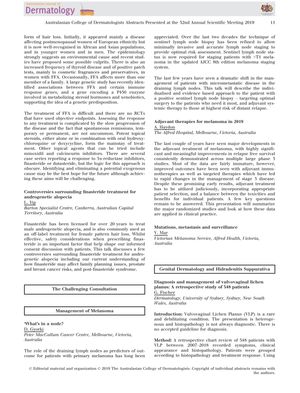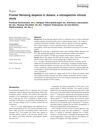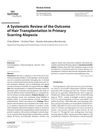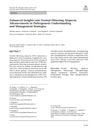The Challenging Consultation: Management of Melanoma
May 2019
in “
Australasian Journal of Dermatology
”

TLDR The conclusion is that managing hair loss conditions like FFA and melanoma requires individualized approaches, considering new findings and balancing treatment benefits with potential risks.
The document discusses several topics related to dermatology, with a focus on hair loss conditions and melanoma management. It highlights that Frontal Fibrosing Alopecia (FFA) is a form of hair loss that was initially thought to affect mainly postmenopausal European women but is now recognized in a broader demographic. Studies suggest environmental causes and a genetic predisposition linked to immune response genes and a gene encoding a P450 enzyme. Treatment for FFA is challenging due to the slow progression of the disease and the lack of randomized controlled trials (RCTs) with objective endpoints. The main treatments include potent topical steroids, hydroxychloroquine, doxycycline, minoxidil, calcineurin inhibitors, and 5α-reductase inhibitors like finasteride or dutasteride, although the rationale for the latter is unclear.
The document also addresses controversies surrounding finasteride treatment for androgenetic alopecia, including its impact on family planning, cancer risks, and post-finasteride syndrome. In the management of melanoma, it notes the importance of sentinel lymph node status in staging and the shift towards individualized treatment approaches for patients with micrometastatic disease in lymph nodes, including surgery and adjuvant systemic therapy. Recent developments in adjuvant treatment of melanoma have shown improvements in relapse-free survival, but patient selection and balancing toxicities and benefits are crucial. The document also mentions a retrospective study of 548 patients with vulvovaginal Lichen Planus (VLP), a rare and debilitating condition, to understand symptoms, clinical appearance, histopathology, and treatment response, although no accepted diagnosis guideline exists for VLP.






